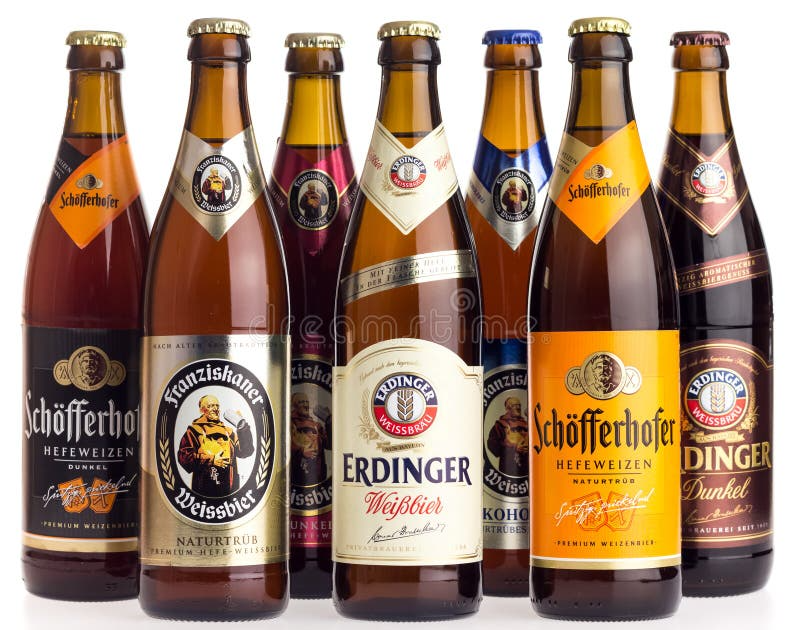Hefeweizen Beer

Hefeweizen, also known as Wheat Beer, has a rich history, unique brewing process, and varied sensory experience, offering beer enthusiasts a deeper appreciation of this beloved style.
- Introduction
- Etymology and Pronunciation
- History and Origin
- Brewing Process
- Key Ingredients
- Varieties
- Notable Brands
- Sensory Profile
- Serving Recommendations
- Food Pairings
- Awards and Recognition
- Health and Consumption
- References & Links
1. Introduction
Hefeweizen, a traditional German wheat beer, is renowned for its distinctive cloudy appearance and unique flavour profile. Characterised by the presence of yeast (‘hefe’ in German), it is a top-fermented beer that has gained popularity worldwide for its refreshing taste.
2. Etymology and Pronunciation
The term ‘Hefeweizen’ is derived from two German words: ‘hefe,’ meaning ‘yeast,’ and ‘weizen,’ meaning ‘wheat.’ The word is pronounced as ‘heh-feh-vite-sen.’
3. History and Origin
Hefeweizen’s origins trace back to the Middle Ages in Bavaria, Germany. Initially, the brewing of wheat beers was exclusively a privilege of the Bavarian royal family. The earliest documented wheat beer brewery dates back to 1040 in Weihenstephan, Bavaria, which is considered the world’s oldest still-operating brewery.
The 16th century saw a significant shift in the production of wheat beers. Bavarian laws were adjusted to allow commoners to brew wheat beer, leading to a surge in its popularity. However, by the 17th century, the interest in wheat beers waned due to the rising preference for barley-based beers.
The resurgence of Hefeweizen occurred in the 1960s when German breweries began to revitalise wheat beer production, adapting to modern brewing methods while retaining traditional recipes. This revival was critical in establishing Hefeweizen as a significant style in the global beer landscape.
By the 20th century, Hefeweizen had become synonymous with Bavarian culture. Its popularity spread beyond Germany, becoming a staple in beer gardens and breweries worldwide, often associated with the image of a convivial, relaxed Bavarian lifestyle.
4. Brewing Process
The brewing process of Hefeweizen involves several key steps:
- Mashing: Mixing crushed wheat and barley malts with hot water to extract fermentable sugars.
- Lautering: Separating the liquid wort from the solid grain husks.
- Boiling: The wort is boiled and hops are added for flavour and aroma.
- Fermentation: The cooled wort is transferred to a fermenter, where yeast is added. The yeast ferments the sugars, producing alcohol and carbon dioxide.
- Maturation: The beer matures, allowing flavours to develop.
- Packaging: The beer is then filtered and packaged into bottles or kegs.
5. Key Ingredients
- Wheat Malt: Provides a light, crisp base and contributes to the beer’s cloudy appearance.
- Barley Malt: Adds depth and complexity to the flavour.
- Yeast: A specific strain that imparts the characteristic banana and clove aromas.
- Hops: Typically mild and used more for their preservative qualities than for flavour in this style.
6. Varieties
- Dunkelweizen: A darker version with more pronounced malt flavours.
- Weizenbock: A stronger, more robust variant.
- Kristallweizen: A filtered version that is clear, not cloudy.
7. Notable Brands
- Weihenstephaner Hefeweissbier
- Paulaner Hefe-Weißbier
- Franziskaner Hefe-Weissbier
8. Sensory Profile
Hefeweizen is known for its:
- Appearance: Cloudy, golden-yellow colour with a thick, creamy head.
- Aroma: Notes of banana, clove, and sometimes vanilla or bubblegum.
- Taste: Refreshingly crisp with a slight citrus tang and a balanced sweetness.
- Mouthfeel: Smooth and light with a moderate to high carbonation.
9. Serving Recommendations
- Glassware: Traditionally served in a tall, vase-shaped weizen glass to showcase its colour and allow room for its large head.
- Temperature: Best enjoyed at 4-7°C (39-45°F).
10. Food Pairings
Hefeweizen pairs well with:
- Light dishes: Salads, seafood, and sushi.
- Spicy food: Complements the heat of Mexican or Indian cuisines.
- Soft cheeses: Balances the flavours of goat cheese and mozzarella.
11. Awards and Recognition
Hefeweizen beers have won numerous awards at international beer competitions, including the World Beer Cup and the Great American Beer Festival.
12. Health and Consumption
While enjoyable, responsible consumption is advised. Hefeweizen, like other wheat beers, may contain more calories and carbohydrates due to its wheat content.